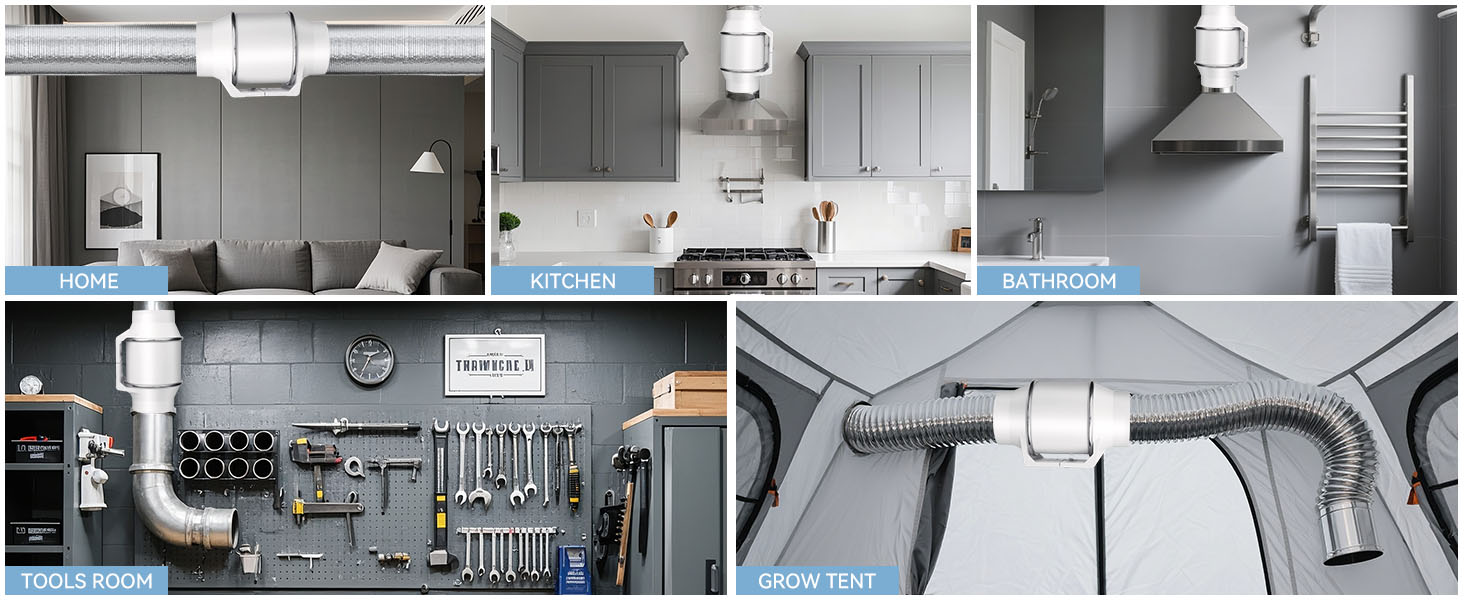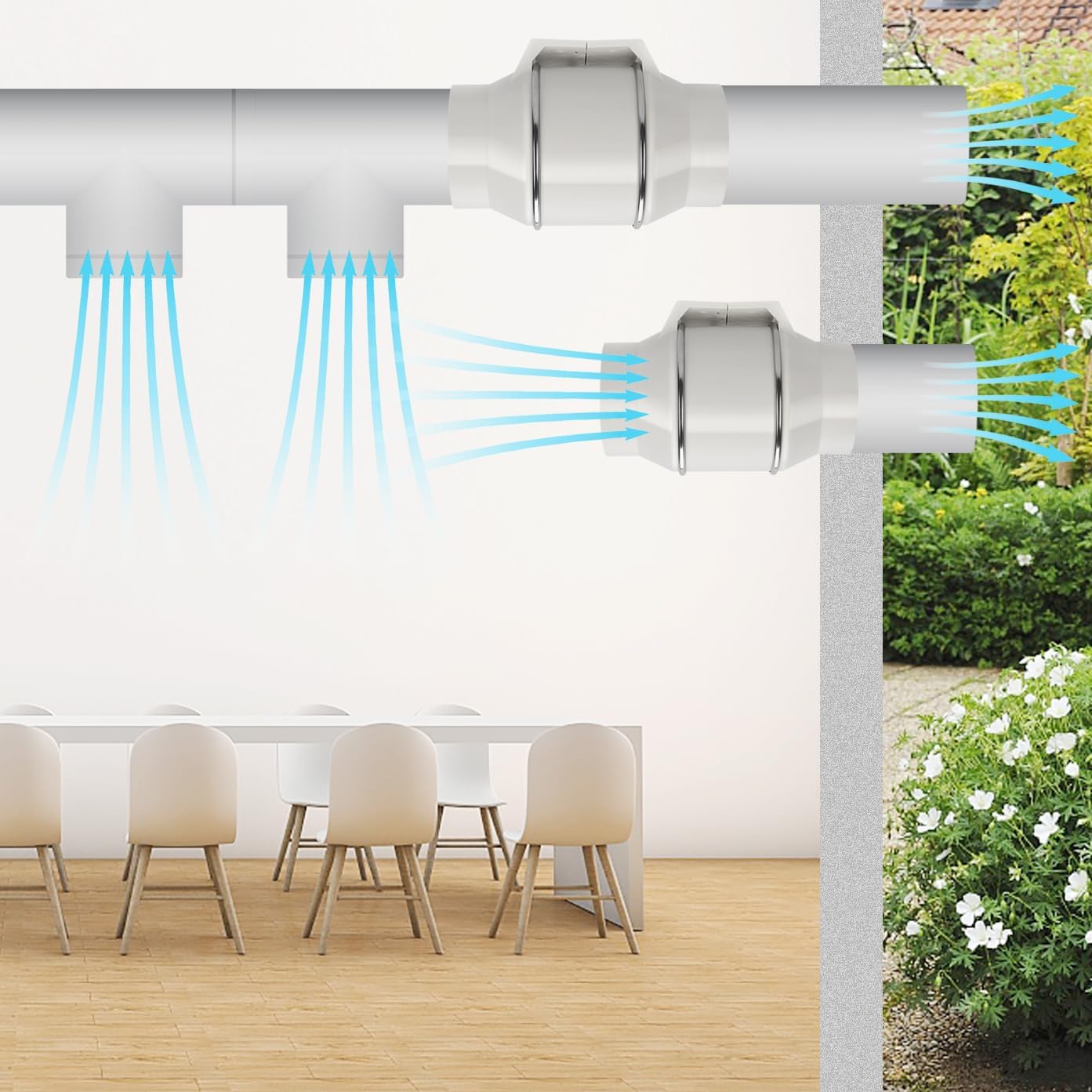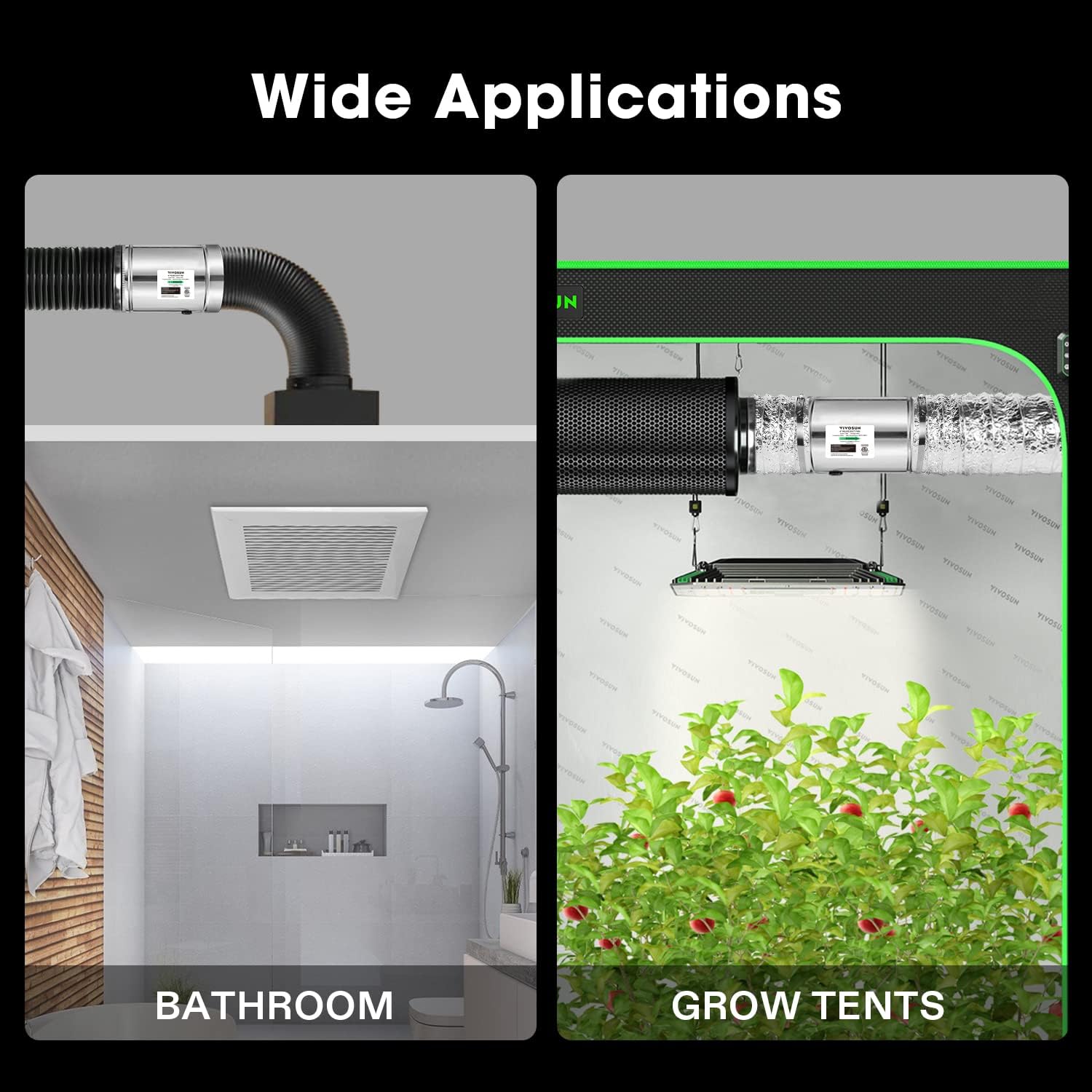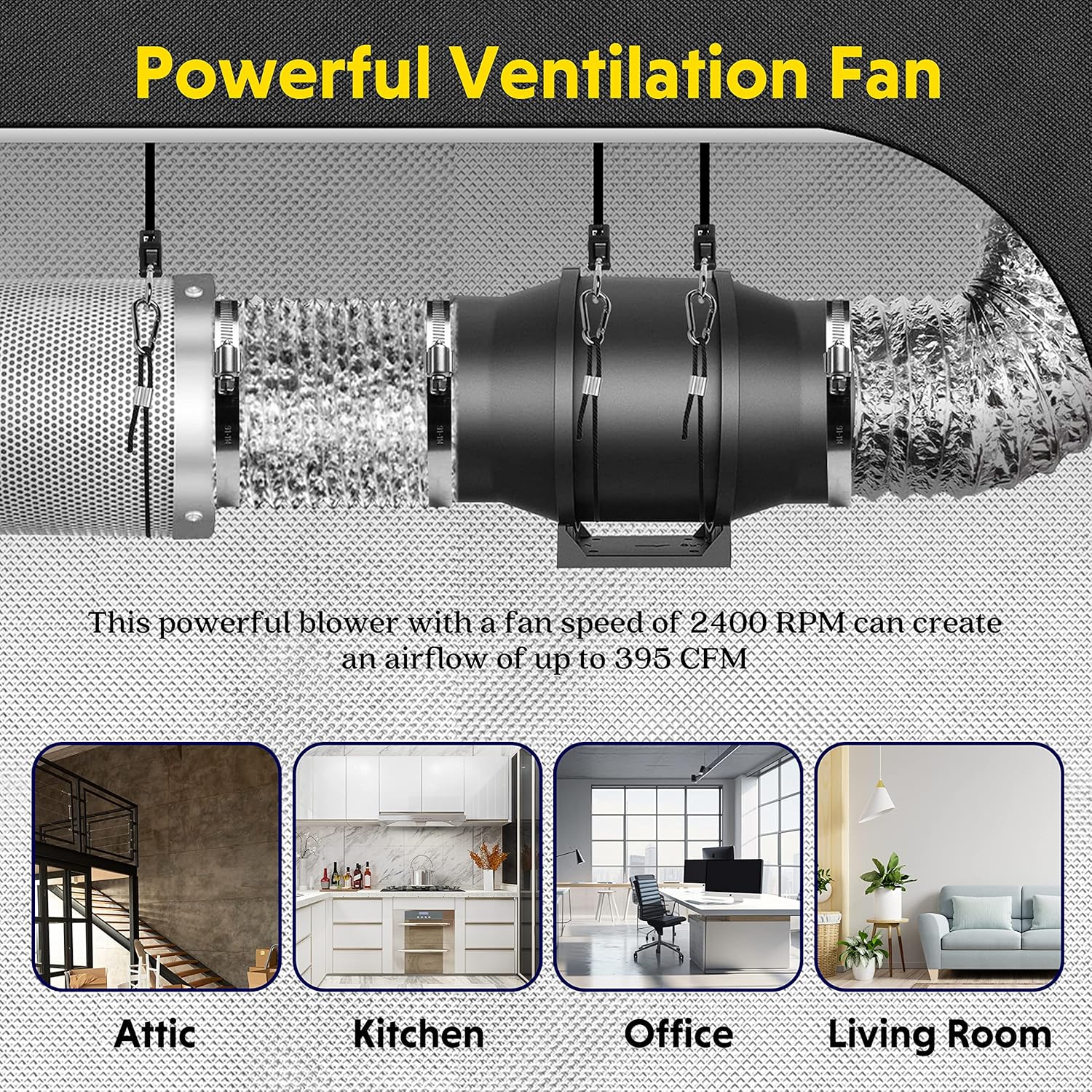A comprehensive guide to the best ventilation inline tube fans
Improving indoor air quality and ensuring effective temperature regulation is critical to any space, whether residential, commercial or industrial. One of the most effective solutions to achieve this is inline fans. These multi-functional devices are designed to work in your existing ducts, greatly improving airflow and enhancing the overall performance of your ventilation system. This guide will give you all the information you need for inline fan fans, from knowing its features to choosing and installing the perfect need.
What exactly is a linear fan?

A linear fan, commonly known as an HVAC inline fan or a conduit booster fan, is a fan that is directly mounted in a pipe. Unlike traditional exhaust fans installed on walls or ceilings, these fans are hidden in ducts, making them a discreet and powerful solution. Their main purpose is to increase the airflow provided by the central HVAC system or to ventilation in specific areas where targeted air movement is required. They can be used to pull out stale air, such as an inline exhaust fan, according to the application, or push fresh air in. The design usually has a streamlined body, sometimes made of durable, high-quality plastic, with a powerful electric motor at the core designed for efficient and often quiet operation.
Key Benefits of Choosing Inline Fans
Installing an inline fan fan has many advantages. First, they greatly improve ventilation efficiency. If your room is always too hot, too cold or stuffy, an inline fan can help balance the temperature and circulate fresh air more effectively. Second, their versatility is the main advantage. Whether you need long tubes, ventilated bathrooms, kitchens or basements that run in your home for a long time, or need a steady air movement in a business environment like an office or a cafeteria, there is an inside fan for this job. For larger spaces, commercial inline duct fans or industrial inline duct fans provide the power and durability required. Many modern units are also designed as quiet inline fan fans, minimizing operating noise, which is an important benefit for residential and office environments. Additionally, their energy-efficient design ensures maximum power consumption, resulting in lower utility bills.
Choose the right inline tube fan for your needs
Several factors need to be considered when choosing the appropriate inline tube fan. Airflow capacity measured in cubic feet per minute (CFM) is crucial. You need a high CFM inline fan for larger spaces or areas that require a lot of air exchange. The diameter of the existing pipe will determine the size of the fan you can install. Noise levels are measured in record or decibels (DB), which is another important consideration, especially for living spaces or quiet office environments; looking for models designed specifically for low noise operations, often sold as quiet inline fans.
There are also different types of inside fans. The axial fan moves parallel to the shaft and is suitable for general ventilation with low pressure resistance. In contrast, the centrifugal fan uses a rotating impeller to suck and drain air at a 90-degree angle, making it more suitable for applications with higher static pressure, such as longer ducting operations or systems with filters. At Ningbo Aoshun Electrical Co., Ltd., we understand the importance of sourcing the right components, and our range ensures you have access to innovative electrical products tailored to a variety of requirements.
Step-by-step guide to installing an inline tube fan
Although specific installation steps may vary by model, here are general guidelines for installing inline fans, which are especially useful if you set up an inline exhaust fan:
1. Safety First: Be sure to turn off the power supply of the relevant circuits in the circuit breaker box before starting any electrical work. Wear proper safety gear, such as gloves and eye protection.
2. Select location: Determine the best point in the duct for the fan. This may be halfway along the long tube to increase the airflow, or it may be near the exhaust point for exhaust. Make sure there is enough fan space and access to later maintenance.
3. Cut pipe (if necessary): If you install it into an existing rigid pipe, you may need to cut out a section to accommodate the fan. For flexible pipes, you connect the fan to the end of the pipe.
4. Install fan: Fix the inline pipe fan into the pipe. Most fans come with mounting brackets or designs designed to fit. Make sure to correctly determine the direction of the fan for the desired airflow direction (usually with arrows indicating this).
5. Sealed connection: Use tape or latex sealant to ensure that all connections between the fan and the pipe are sealed. This prevents leakage and ensures maximum efficiency.
6. Wire: Connect the fan to the power supply according to the manufacturer's instructions. This may involve wiring it to a switch or directly to the power supply. If you are not satisfied with your electrical work, hire a qualified electrician. Ningbo Aoshun Electrical Co., Ltd. A guide to compatible accessories can be provided for complete settings.
7. Test the fan: Once everything is securely installed and wired, restore the power and test the fan to make sure it runs correctly and quietly.
Maintain your inline fan for long-term performance
To ensure that your inline fan fan operates effectively over the next few years, regular maintenance is key. Check regularly for the fan to accumulate dust or debris on the blades and housing, as this reduces airflow and filters the motor. Turn off the power before cleaning. Gently wipe the blade and inside with a damp cloth. Check that all connections are still safe and there is no abnormal noise during operation, which may indicate a problem with the motor or bearing. For many environments, especially those with high dust or grease content (such as kitchens or workshops), more frequent inspections may be required. Regular maintenance not only extends the life of the inline fan, but also ensures continuous optimal air quality.
Why consider our range of ventilation solutions?
When looking for inline pipe fans, you look for reliability, efficiency and quiet performance. Our products, such as those from Ningbo Aoshun Electrical Co., Ltd., take these priorities into consideration. We focus on innovative electrical products, offering stylish, modern designs made from durable high-quality materials. Features such as powerful but quiet motors, energy-efficient operation and user-friendly installation are standard. This commitment means that the products you receive not only perform well, but also seamlessly integrate into your space, providing versatile solutions for residential, commercial building and industrial environments. Our goal is to provide a one-stop buying experience for all your ventilation needs.
Conclusion: Correct ventilation is easier to breathe
This comprehensive guide should give you the knowledge to select, install and maintain inline fans, thereby changing the air quality and comfort of the space. By understanding the benefits and proper applications of equipment like HVAC inline fans or specialized centrifugal inline fans, you can make informed decisions that greatly improve your environment, ensuring that every room is equipped with excellent air purity and comfort.





